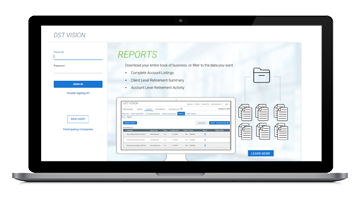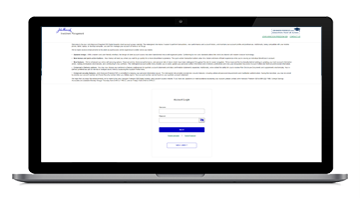Staying patient and positioned for opportunity in the bond market
As markets react to the implementation of tariffs, bond yields have experienced significant volatility. We discuss why bonds continue to offer crucial diversification benefits and examine the vital role active management can play in steering through uncertain markets.

As investors grapple with the implementation and subsequent pause on some tariffs, bond yields have been on quite the ride. The 10-year U.S. Treasury yield has experienced significant ups and downs as the market strives to make sense of a relentless stream of news regarding tariffs and the potential for negotiations.
In this environment, we’ve observed a marked steepening of the yield curve, driven by expectations of multiple rate cuts in 2025 and the possibility of rising inflation. Yet predicting the exact number of interest rate cuts that we might see this year is no easy task. If inflation makes a resurgence, it could pose a challenge for U.S. Federal Reserve (Fed) Chair Jerome Powell to justify cutting rates, particularly if inflation remains above the central bank’s target.
Can bonds still provide diversification in this market environment?
Given this backdrop, investors might be concerned that we’re due for a repeat of 2022, when global bond markets suffered unprecedented losses just as equity markets experienced double-digit declines. During periods of market volatility, it’s important to look beyond short-term market swings and keep the big picture in mind. So far this year, bond prices have remained relatively stable even as equities have fallen.
In addition, we believe that bonds will continue to add valuable diversification benefits even amid market turbulence. Bonds can deliver monthly income, with the potential for less downside risk than equities and often higher yields than cash.
If the credit and equity markets are correct in signaling a looming recession, then over the long term, we’re likely to see a decline in inflation. This scenario could provide the Fed with the flexibility to implement rate cuts. However, the central bank remains data-driven and will require evidence that inflation is stable or declining, even amid tariff pressures, before acting.
In the short term, we should expect heightened market volatility to continue. Looking ahead, investors should take comfort that high-quality bond yields remain elevated well above their historical average and could provide the potential for compelling risk-adjusted returns for long-term investors.
High-quality bond yields remain elevated
How active management can help in volatile markets
Active management can play a vital role in volatile markets, providing many levers to pull in an effort to take advantage of opportunities presented by the bond market that passive approaches simply cannot replicate. Unlike index-based strategies, active managers have the flexibility to adjust holdings in response to changing market conditions, a strong benefit in fast-moving markets that can change course quickly.
As market uncertainty has crept up over the last several years, we’ve seen an opportunity to tilt toward more defensive areas of the market such as agency mortgage-backed securities that can offer compelling yields without adding credit risk. We’re also seeing value within U.S. Treasuries, particularly at the long end of the curve, while keeping credit exposure focused on the short end. This approach can help to maintain a lower spread duration, minimizing the impact that any spread widening might have as the bond markets adopt a more risk-off stance.
As of April 8, high-yield spreads have widened to 457 basis points, a shift that has made these securities more compelling; however, we believe that we need to exhibit more patience before taking advantage of an opportunity in credit-sensitive securities. Historically, spreads have seen significant widening during major market events, beyond what we’ve seen in the current market.
High-yield spreads could have further room to expand
High-yield spreads (bps)
We anticipate that high-yield spreads could continue to widen out as recession risks are increasingly factored in. This scenario could present active managers with an opportunity to invest in high-yield bonds at favorable levels, but it demands a patient approach in the meantime.
How short duration bonds might help investors manage interest rate risk
Since last fall, interest rate volatility has posed a significant challenge to the fixed-income market and recent developments suggest this trend may persist. In this context, short duration bonds could provide a strategic opportunity to remain invested while mitigating risk. Their lower sensitivity to interest rate fluctuations offers potential stability if rates continue to climb. Additionally, these bonds are currently yielding above 4%, offering a substantial premium over cash.
Short duration bonds are offering higher yields than cash
While we believe that intermediate duration core and core-plus allocations still hold the potential for attractive total returns, especially if the United States enters a recession, short duration bonds serve as a valuable solution for investors concerned about ongoing interest rate volatility. This approach allows for participation in the market without excessive exposure to rate swings.
Staying positioned for opportunities
We recognize that market volatility can be challenging for investors, but navigating such environments successfully requires a strategic approach. Leveraging the expertise of seasoned active managers can be a way to manage risk while still offering the potential to capitalize on opportunities that arise from any market volatility.
Despite current market uncertainty, bonds remain a valuable source of diversification and offer attractive yields, particularly in areas of the market such as high-quality and short duration securities. By staying disciplined, investors can better weather market turbulence and position themselves for compelling long-term returns.
Important disclosures
Views are those of the authors and are subject to change. No forecasts are guaranteed. This commentary is provided for informational purposes only and is not an endorsement of any security, mutual fund, sector, or index, and is not indicative of any John Hancock fund.
The Bloomberg U.S. Aggregate Government/Treasury Index tracks the performance of public obligations of the U.S. Treasury comprising U.S. Treasury bonds and notes across maturities ranging from one to thirty years. The Bloomberg U.S. Aggregate Securitized Mortgage-Backed Securities (MBS) Index tracks the performance of investment-grade U.S. securitized MBS. The Bloomberg U.S. Corporate Investment Grade (IG) Index tracks the performance of the IG, fixed-rate, taxable corporate bond market. The Bloomberg U.S. Aggregate 1-3 Year Index tracks the performance of the investment-grade, U.S. dollar-denominated, fixed-rate taxable bond market, including instruments with a remaining maturity of one to three years. It is not possible to invest directly in an index.
Standard deviation is a statistical measure of the historic volatility of a portfolio. It measures the fluctuation of a fund’s periodic returns from the mean or average. The larger the deviation, the larger the standard deviation and the higher the risk. A yield curve illustrates the relationship between interest rates and the maturity dates of government debt securities, used as a tool for predicting economic trends and future interest rate changes.
Fixed-income investments are subject to interest rate and credit risk; their value will normally decline as interest rates rise or if an issuer is unable or unwilling to make principal or interest payments. Investments in higher-yielding, lower-rated securities include a higher risk of default. Foreign investing, especially in emerging markets, has additional risks, such as currency and market volatility and political and social instability. Mortgage- and asset-backed securities may be sensitive to changes in interest rates, and may be subject to early repayment and the market’s perception of issuer creditworthiness. Liquidity—the extent to which a security may be sold or a derivative position closed without negatively affecting its market value, if at all—may be impaired by reduced trading volume, heightened volatility, rising interest rates, and other market conditions. The use of hedging and derivatives could produce disproportionate gains or losses and may increase costs.
MF4399785









